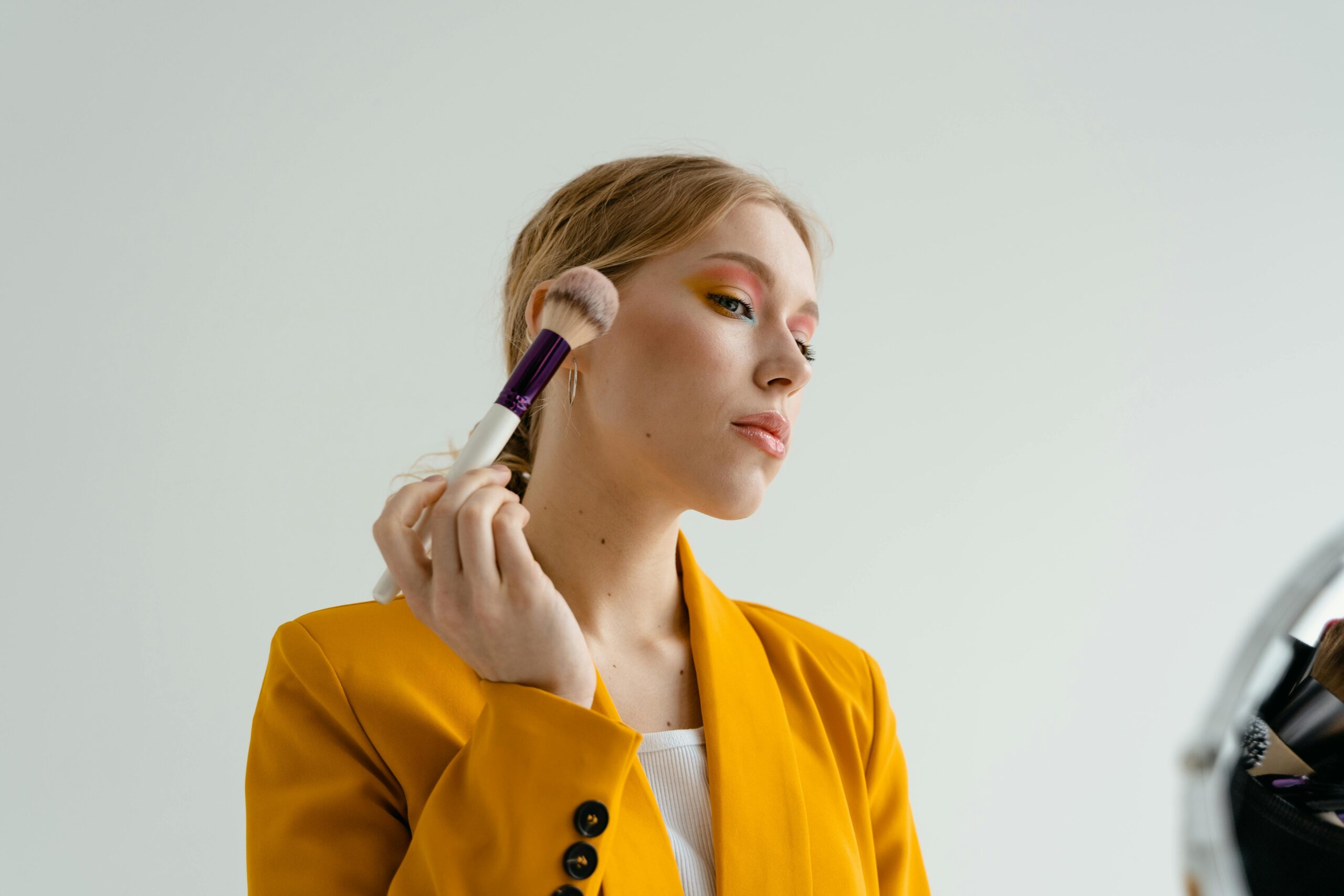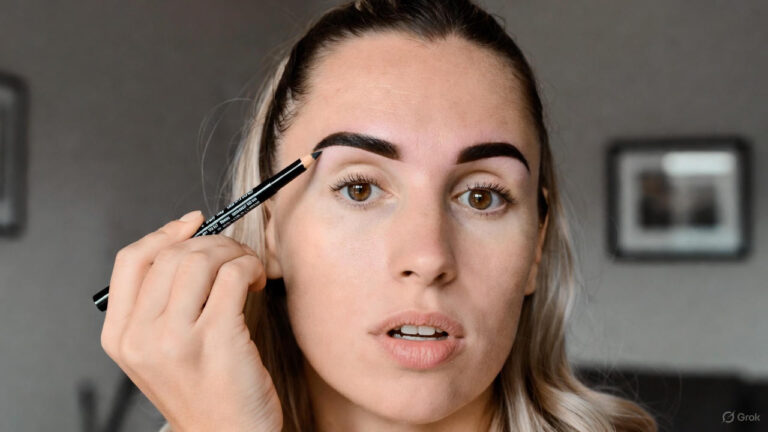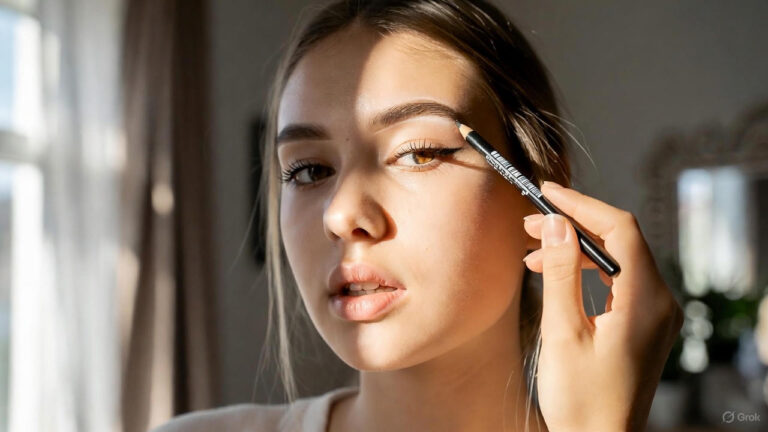Achieving a flawless complexion can be challenging, especially when dealing with uneven skin tone, redness, or dark spots. This is where color-correcting makeup comes in. Color correction involves using specific hues to neutralize skin imperfections and create an even base for foundation.
In this article, we will explore the key benefits of using color-correcting makeup and how it can help you achieve a more balanced complexion.
What Is Color-Correcting Makeup?
Color-correcting makeup is designed to counterbalance discoloration in the skin by using opposite colors on the color wheel. For example, green correctors neutralize redness, while peach and orange tones are effective for covering dark circles.
The idea is that applying these corrective shades before foundation helps even out the skin tone, allowing your makeup to appear more natural and uniform. These products are often available in creams, liquids, and sticks, making them easy to incorporate into your daily routine.
1. Neutralizes Skin Imperfections
One of the main benefits of color-correcting makeup is its ability to neutralize common skin issues such as redness, dark spots, and uneven patches.
- Redness: If you struggle with redness from acne, rosacea, or irritation, green color correctors can neutralize the redness and create a more balanced complexion.
- Dark Circles: For those dealing with under-eye darkness or pigmentation, peach and orange tones effectively brighten the area, making your skin appear more awake and refreshed.
- Dullness: A lavender or purple corrector can be used to brighten dull or sallow areas of the skin, giving you a more radiant appearance.
These correctors work by balancing out problem areas, allowing for a smoother, more consistent base for foundation.
2. Reduces the Need for Heavy Foundation
Color-correcting makeup helps reduce the amount of foundation or concealer you need to apply. By addressing discoloration at its source, it makes it easier to achieve a flawless finish without relying on thick layers of product.
For instance, if your skin has uneven pigmentation, using a color corrector allows you to even out the tone without applying a full-coverage foundation. This results in a more natural, lightweight look. It’s particularly useful for everyday makeup when you want to keep your complexion light and breathable.
3. Provides a Natural, Flawless Finish
When used correctly, color-correcting makeup enhances the natural beauty of your skin. It doesn’t mask your face under heavy layers of makeup but rather works to bring out an even, balanced tone.
By correcting uneven skin tone and brightening the complexion, your foundation can go on more smoothly and blend better, leading to a more natural-looking finish. This method is ideal for those who want to avoid a “cakey” or overly made-up look while still addressing problem areas on the skin.
4. Customizable to Your Skin’s Needs
Color-correcting makeup can be easily customized based on your skin concerns. Since different shades target different issues, you can mix and match products to address multiple skin concerns at once.
For example, you might use a green corrector on your cheeks to neutralize redness, a peach shade under your eyes to brighten dark circles, and a lavender tone on your forehead to brighten dullness. This versatility allows you to target specific areas rather than applying a one-size-fits-all solution across your entire face.
5. Works Well with All Skin Types
Whether you have dry, oily, combination, or sensitive skin, color-correcting makeup is suitable for all skin types. These products are available in a variety of textures and formulas, including hydrating creams for dry skin and mattifying liquids for oily skin.
Many color correctors are also formulated to be gentle on sensitive skin, ensuring that they don’t cause irritation or breakouts. With a wide range of options available, it’s easy to find a product that works with your specific skin type and concerns.
6. Long-Lasting Results
Another advantage of using color-correcting makeup is its long-lasting effect. These products are designed to stay put and keep your skin looking even throughout the day.
By creating a neutral base under your foundation, color correctors help your makeup stay in place for longer without the need for constant touch-ups. This is especially helpful if you have a busy schedule or need your makeup to last through a long event.
7. Enhances Makeup Application
Color-correcting makeup serves as an excellent primer for your foundation. By evening out the skin tone and neutralizing problem areas, it allows your foundation to glide on more easily and blend seamlessly into the skin.
This can improve the overall texture of your makeup, helping it appear smooth and polished. With the correctors doing the heavy lifting, your foundation will have less work to do, creating a more even and refined look.
How to Use Color-Correcting Makeup
Color-correcting makeup should be applied after skincare and before foundation. Here’s a quick guide on how to use it effectively:
- Step 1: Start with clean, moisturized skin to ensure your makeup goes on smoothly.
- Step 2: Apply your color corrector to the areas that need it most. Use green for redness, peach or orange for dark circles, and lavender for dullness.
- Step 3: Blend the corrector gently with a brush, sponge, or your fingertips. The goal is to neutralize the discoloration, not completely cover it.
- Step 4: Once your corrector is blended, apply your foundation as usual. Use a light hand to avoid disturbing the corrector underneath.
- Step 5: Set your makeup with a translucent powder to ensure it stays in place all day.
Conclusion
Color-correcting makeup is an essential tool for anyone looking to achieve an even and flawless complexion. It effectively neutralizes skin imperfections, reduces the need for heavy foundation, and provides long-lasting results. Whether you struggle with redness, dark spots, or dullness, incorporating color correctors into your routine can help you enhance your skin’s natural beauty and improve your makeup application. Experiment with different shades to find what works best for your unique skin concerns, and enjoy the confidence that comes with a perfectly even skin tone.
FAQs
1. What color corrector should I use for redness?
To neutralize redness, a green color corrector is the most effective. Green counteracts red tones, making it ideal for covering blemishes, rosacea, and irritated skin.
2. Can color-correcting makeup be used on sensitive skin?
Yes, color-correcting makeup is suitable for sensitive skin. Many correctors are formulated with gentle ingredients to avoid irritation. However, always patch-test new products to ensure they work well with your skin type.
3. Do I need to apply foundation after using a color corrector?
Yes, color correctors are designed to neutralize discoloration, but they are not a replacement for foundation. Apply foundation over the corrector to create an even, polished finish.
4. What color corrector is best for dark circles?
Peach and orange correctors work best for dark circles. The peachy tones neutralize the bluish and purple undertones commonly found in under-eye circles.
5. How often can I use color-correcting makeup?
You can use color-correcting makeup daily if needed. It can be part of your regular makeup routine to even out skin tone and create a flawless base.
6. Can I mix different color correctors on my face?
Yes, you can mix different correctors to target various skin issues. For example, you can use green on redness and peach under your eyes at the same time.
7. How much color corrector should I use?
A small amount goes a long way with color correctors. Use just enough to neutralize the discoloration, and blend it well to avoid a heavy or caked-on appearance.



